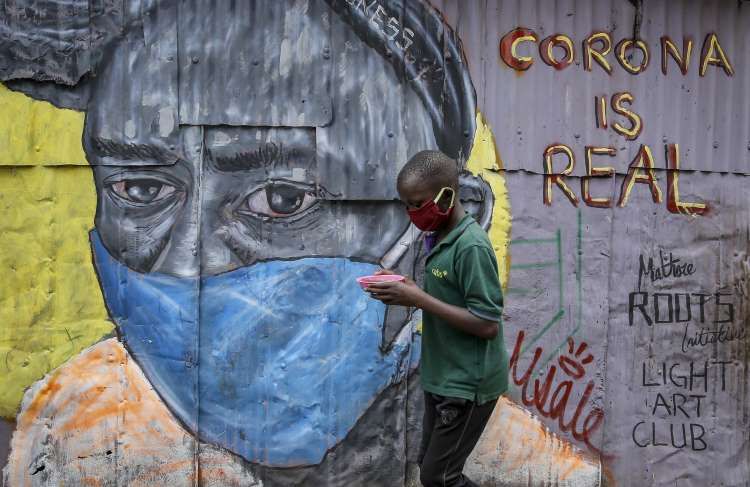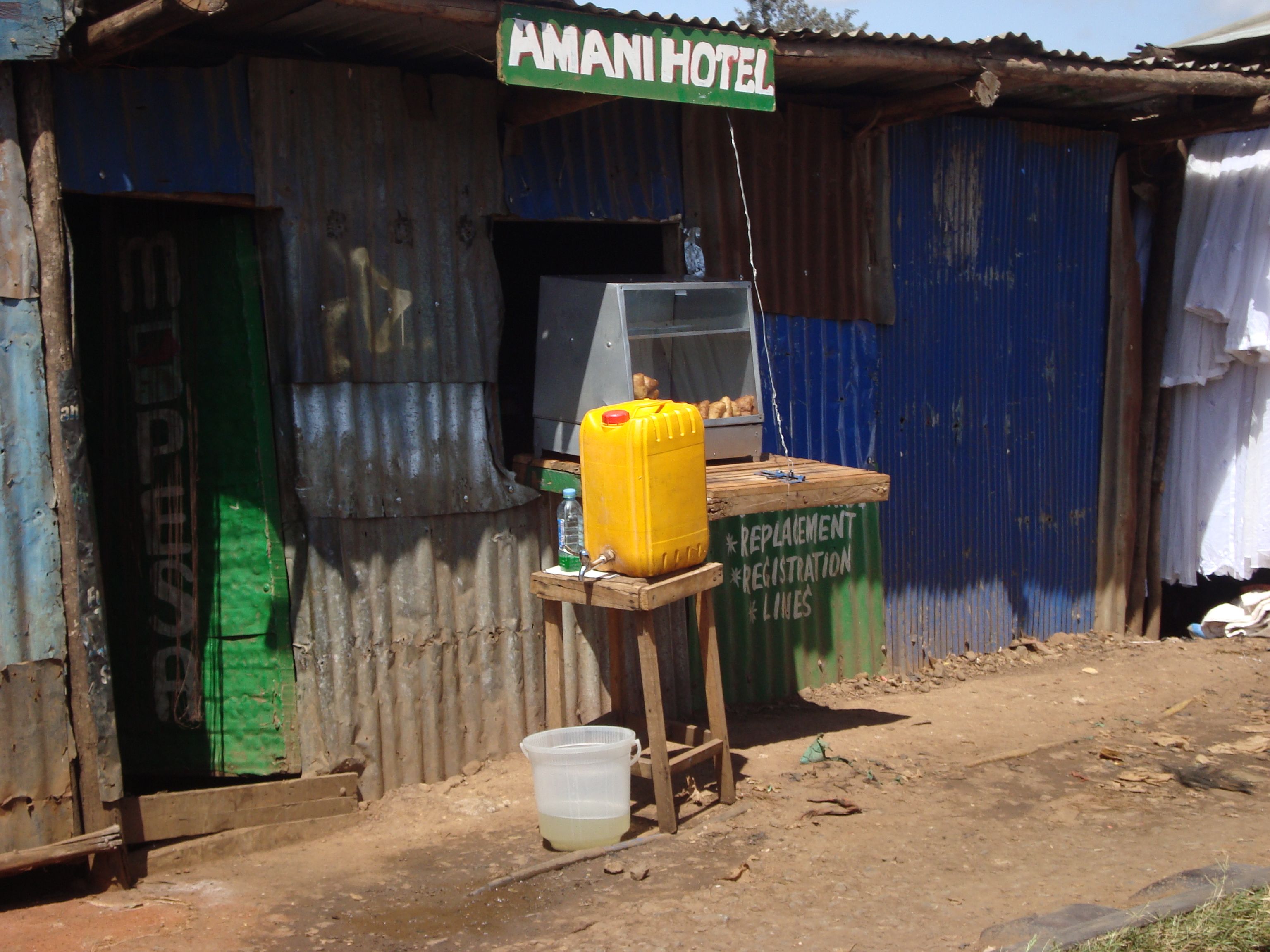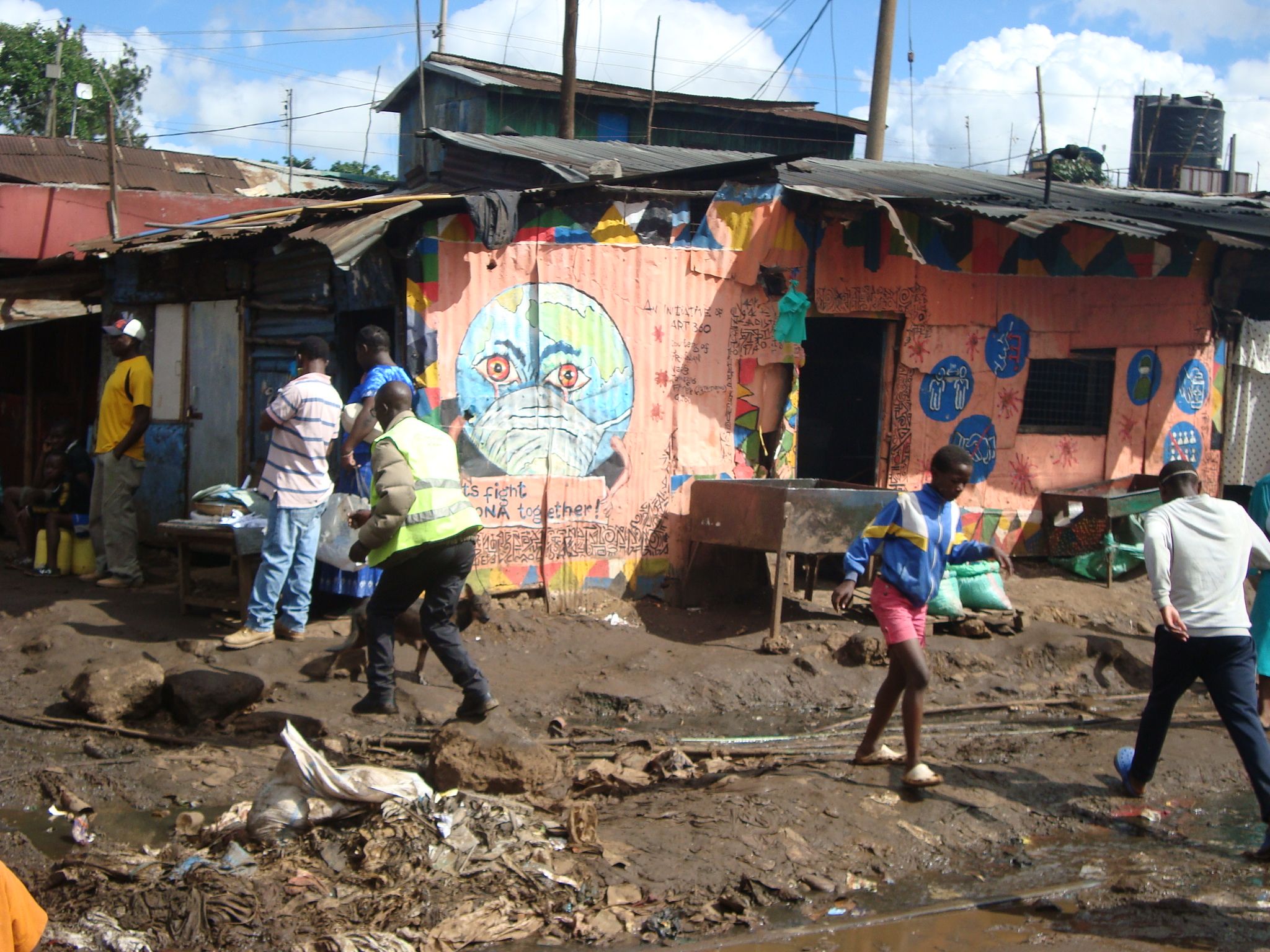When Covid-19 was first reported by the World Health Organization (WHO) in March 2020 as a pandemic for global awareness, Africans panicked.
Many anticipated worse in terms of infection curves and death rates compared to the Asian and Western countries where the virus had already peaked. African countries were labeled as time bombs for Covid-19 in regard to their weak health systems and unpreparedness.
Africa’s informal settlements were especially projected as areas where the virus would hit most and wipe out all living residents. The prediction caused terror and anxiety among Africans so much that many even began confessing their sins in readiness to meet their Maker in case it got worse. Others tried to escape.
“We cannot wait staring at death. The virus that causes the COVID 19 disease spreads because of poor hygiene and congestion. Kibera is a good example without meandering,” said Beatrice Anyango, resident of Kibera.
In this giant 250,000-population slum on the outskirts of Nairobi, many vacated the city for the countryside to flee from the virus.
However, taking early measures and interventions such as border closures, lockdowns and social distancing has slowed down the virus spread in many African countries as of yet.
Community-driven initiatives to provide water, sanitation and awareness in Kibera, the largest informal settlement in Kenya and Africa-wide, are also helping protect vulnerable residents. This, despite widespread unmet basic sanitation needs and the impossibilities of social distancing in a crowded slum.
In Kibera, Taking Protection Into Their Own Hands
Kibera forms part of Nairobi County’s population of six million situated in Kenya’s capital approximately seven kilometers southwest of the city center. When Kenya’s first case of coronavirus was confirmed on 13 March at Kenyatta National Hospital, Kibera residents were shocked.
The infected person was from Ongata-Rongai estate, Kajiado County, not very far from Kibera. At this stage, most cases were from people who had travelled outside of the country. Kibera residents were therefore cautioned to stop casual labour in the neighborhoods.
At first, residents resisted and disputed the claims, since this was the only source of their livelihoods. Just like many other informal settlements globally, Kibera residents are low-income earners, living from hand to mouth. Many manage to eke out a living by running small-scale businesses or casual jobs like household chores and masonry; many women are forced into prostitution.
According to the 2019 Kenya Population and Housing Census, the unemployment rate is 50 percent, and most slum dwellers earn about Ksh200 ($2) a day.
The decision by the government to impose air passengers and their contacts to 14 days of compulsory quarantine changed the situation. The seriousness of the pandemic dawned on Kibera residents, who took it upon themselves as a community responsibility to implement the government and Ministry of Health’s advice to try to save themselves and their families.
The initiatives up to date are being led by various community leaders who are mobilizing resources through private organizations. For instance, Kibera Town Centre (KTC), an organization known for its human needs services, has been providing free clean drinking water, sanitation services, handwashing stations and daily public sensitization about Covid-19 in the settlement.
According to Byrones Khainga, KTC Technical Manager, the facility serves approximately 800 to 1,000 people per day. The majority who use hand-washing taps are children, while adults mainly use the showers and toilets.
“Apart from these free provisions, we sensitize residents through a public address system which reaches many people. We communicate in almost all local dialects found within Kibera to ensure nobody is left behind in Covid-19 information,” Khainga explained.
“We are educating people on the nine steps of proper handwashing, thus scrubbing using soap and running water for at least 20 seconds and regularly after every 20 minutes. We teach them how to wear masks and its importance, reasons for social distancing, which pose a challenge here but we are trying,” Khainga said.
Khainga disclosed that funds for running the Covid-19 campaign and interventions come from well-wishers, partners and local government leadership.
According to Kibera resident Florence Awino, if washing hands with soap and running water would keep the virus away and save lives, then anybody would try to do it effectively.
“We are very happy with Shofco activities since the Coronavirus case was reported. We are getting free and clean water daily brought to us by water boozers or tankers. Nowadays we can wash hands everywhere, as the stations are all over the place,” Awino said.
Jane Atieno is among more than 500 residents hired by Shofco in close to 250 and counting hand-washing stations where she has been working since March to date. Atieno admits that despite widespread job losses, for her, the pandemic has been a blessing in disguise. She earns Ksh 300 ($2.80) per day, enough money to pay her bills.
Communal Challenges
Initially, Kibera had been labeled as a death square during the Covid-19 pandemic owing to its dense population. The slum harbours a population of approximately 250,000 within an area of 2.5 square kilometers in southwest Nairobi closely bounded by more affluent areas. The enormous settlement includes 12 ‘villages’: Gatwekera, Soweto, Makina, Kisumu Ndogo, Kichinjio, Laini Saba, Silanga, Lindi, Kianda, Mashimoni, Raila and Kambi Muru.
A typical house measures 12 feet by 12 feet accommodating up to 8 people or more as a family. The average rent for one of these structures is about Ksh2000 per month ($19) yet with no constant water supply while electricity depends on other factors such as illegal connections, tampered metres and solar power.
Dr. Githinji Gitahi, Group CEO of Amref Health Africa, asserted that average life expectancy in Kibera is 30 years of age, skewed by high infant mortality rates with 19 percent of children dying before their fifth birthday. However, this does not mean there are no elderly people living in the area who might be more vulnerable to the coronavirus.
“Sadly, the statistics are skewed by high infant and youth mortality… Covid-19 could make it even shorter,” Gitahi said.
Despite the youthful population, many residents have underlying conditions that could make them more susceptible to Covid-19, such as HIV /AIDS infection, a major contributing factor to orphanhood of many children living in Kibera.
Dr. Mohammed Muoke, the Medical Coordinator for Medicins sans Frontiers (MSF) in Kenya mentioned common diseases include malaria, meningitis, tuberculosis, ringworm, intestinal worms, cholera, typhoid, dysentery, and measles, among other sexual transmitted infections (STIs). According to Amref Health Africa in Kenya Clinic based in Kibera, 50 percent of those being treated for TB are also HIV positive.
Musoke also claimed many HIV-positive residents refuse to take antiretroviral medication that suppresses the virus. This is because many are unable to access or afford it consistently, or afford the quality nutrition needed to accompany it.
Apart from overcrowding and unhygienic conditions, a lack of clean and safe water supply makes the slum an ideal breeding ground for the coronavirus.
Clean water is often difficult to access and can become contaminated with sewage. Drop toilets and open sewers are the norm, with many using plastic bags when it is unsafe to use public facilities after dark. Open sewers and lack of easy access to handwashing facilities exacerbate the problem.
These factors contribute to 40 percent of deaths due to diarrheal diseases in the whole of Nairobi County.
According to the 2019 Kenya Population and Housing Census report, 84 percent of households in Kibra, which contains the Kibera slum as well as nearby wealthy estates, have access to an improved source of water. However, 45 percent of residents get their water from a public tap or standpipe, while 16 percent buy water from vendors. Just 11 percent – mainly the wealthier households located outside of the slum – have water piped into their homes.
With clean water expensive and difficult to access, illegal tapping of water pipes is rampant. While this gives people access to water, these tapping points are typically poorly constructed and allow sewage to seep into the pipes, contaminating the water available at the communal water points.
Nationwide, despite a decades-long advancement in access to water, the past several years have seen a drop: from an estimated 75 percent of households accessing an improved source of drinking water in 2015 to the national census figure of 65 percent in 2019.
This is partly due to the increasing numbers of people living in urban areas, especially in informal settlements such as Kibera. In cities, the percentage of households using safely managed drinking water services declined steadily from 2000 to 2017, with more people, especially the poorest households, relying on water vendors and surface water such as rivers, streams and lakes, according to data from the Joint Monitoring Programme for Water Supply and Sanitation.
There are many diseases endemic within Kibera. Many of them are killers and others permanently disabling. For example, cholera struck residents in May 2019 and spread easily as people are living in close proximity to one another, and now coronavirus may make it worse.
If those aren’t challenges enough, factor in the difficulties encountered when trying to access appropriate healthcare. No ambulance can penetrate; residents use motorbikes or handcarts.
The shanty is known for various issues among Kenyans, regionally and globally only to mention but a few. But it is not a slum for tourists’ attraction. To the hundreds of thousands of residents here, it is home.
Interventions
In the narrow streets of Kibera, self-explanatory graphic posters are pinned almost everywhere on walls and strategic places to remind residents that Covid-19 is here with us.
These are courtesy of Shining Hope for Communities (Shofco), the largest NGO in Kibera. This organization has helped ensure all entry points and public places in Kibera have at least a hand-washing station. It has installed 250 stations to date and counting at bus terminus, markets, major shops, public toilets and other places, where the stations are evenly spread and for free.
The stations are restocked after every four hours while others places even less depending on population.
“We also have a motorbike with loud speakers patrolling in the slum to help create awareness on measures against the virus,” said Kennedy Odede, the CEO of Shofco. “The motorbike is fitted with speakers and pre-recorded voice education on Covid-19. So, the rider’s work is to ride slowly to ensure the message is conveyed.”
“Shofco believes in the potential for communities to change their destiny, with Covid-19 or without. So, we have set up hand-washing stations at every entry point to the slum,” Odede said. “We are also running door-to-door campaigns to raise awareness, distribute hand sanitizers, bleach and homemade soap while combating rumours and misinformation about Covid-19,” he said.
As Kibera is one of the vulnerable communities in Kenya, residents have been taking the hand-washing initiatives seriously. Despite discomfort, it has become the new normal.
According to the Kenya Ministry of Health, headed by Cabinet Secretary, Mutahi Kagwe, in a pandemic such as this, the fate of urban slums will impact the trajectory of the Covid-19 virus on a national scale.
“In partnership with the government, Ministry of Health and other locally based organizations, we are doing all we can to prevent the outbreak from decimating some of our most vulnerable communities,” Kagwe said.
“We know that if and when we face the full force of the virus, our fate is intertwined with one another, our city and our nation as a whole. This is a fact that we will never forget,” he added.
According to Zephaniah Omwocha, area Assistant Chief, to help slow down the spread of the virus, the Kibera inhabitants are keenly watching around the clock, monitoring movements of families, relatives, neighbors, and friends while keeping an eye on strange faces coming to the slum.
This is to discourage free movements and encourage staying at home unless otherwise directed. Kibera residents are also adopting new forms of greeting such as elbow bumps, which is becoming widely popular in Kenya as citizens consider it much safer than the traditional handshake.
From the old to the young, men and women, elbow bumps have now become the official greetings of Kenyans, both in formal and informal settings such as homes.
The people of Kibera are creative, enterprising, and passionate. Despite all the limitations in their homes, the people of Kibera continue to devise a diverse and comprehensive range of community services against the Covid-19 pandemic.
Young creative men use graffiti writings and drawings on walls and open surfaces with artistic expression of people wearing masks, hand-washing, and social distancing among other pictures. These graffiti convey messages about Covid-19 on strategic places that even illiterate people can comprehend.
“We are using our talents to impart information to residents on Covid-19. These graffiti relate to both being literate and illiterate on dangers of the virus,” Kibera graffiti artist Stephen Nzela said.
Many residents of Kibera are sewing face masks and selling them at affordable prices at Ksh 50 ($0.47) while others are distributing them freely to the poor. Organizations such as Kenya Red Cross provide hand sanitizers, while AMREF fumigates the area on a weekly basis. Adventist Development and Relief Agency International (ADRA) humanitarian agency provides portable bucket taps and bleach including strategic hand-washing stations.
Carolina for Kibera (CFK) through the national government is distributing food and cash transfer to vulnerable families and individuals through a program dubbed ‘Adopt A Family’. According to Beth-Ann Kutchma, CFK, Director of Strategic Partnerships, so far approximately 1000 family households and 300 students have been cushioned from hunger and poverty through the program. More are yet to be reached out in the next few months.
Plan International Kenya is also on the ground, joining the sizable group of organizations complimenting each other to slow down the spread of Covid-19.
According to Benard Okoth, area Member of Parliament, there are 1,800 youth from Kibera hired by the national government to clean up the two big markets in Kibera, all villages and estates and drainage systems. Each person earns Ksh 600 ($5.60) per day, and it keeps them busy away from idleness.
These small-scale initiatives are bearing fruits in the fight against coronavirus in Kibera slum. Kenyans had seen the alarm bells sounding around the globe. In Kibera and other slums across the country, communities are taking matters into their own hands, because when a community comes together even in the most fearful times, there is hope.
Appreciation: This story has been produced in partnership with InfoNile with support from Code for Africa and funding from the Pulitzer Center and National Geographic Society. Additional reporting and editing by Annika McGinnis and Fredrick Mugira.
COVID-19 Update: The connection between local and global issues–the Pulitzer Center's long standing mantra–has, sadly, never been more evident. We are uniquely positioned to serve the journalists, news media organizations, schools, and universities we partner with by continuing to advance our core mission: enabling great journalism and education about underreported and systemic issues that resonate now–and continue to have relevance in times ahead. We believe that this is a moment for decisive action. Learn more about the steps we are taking.





